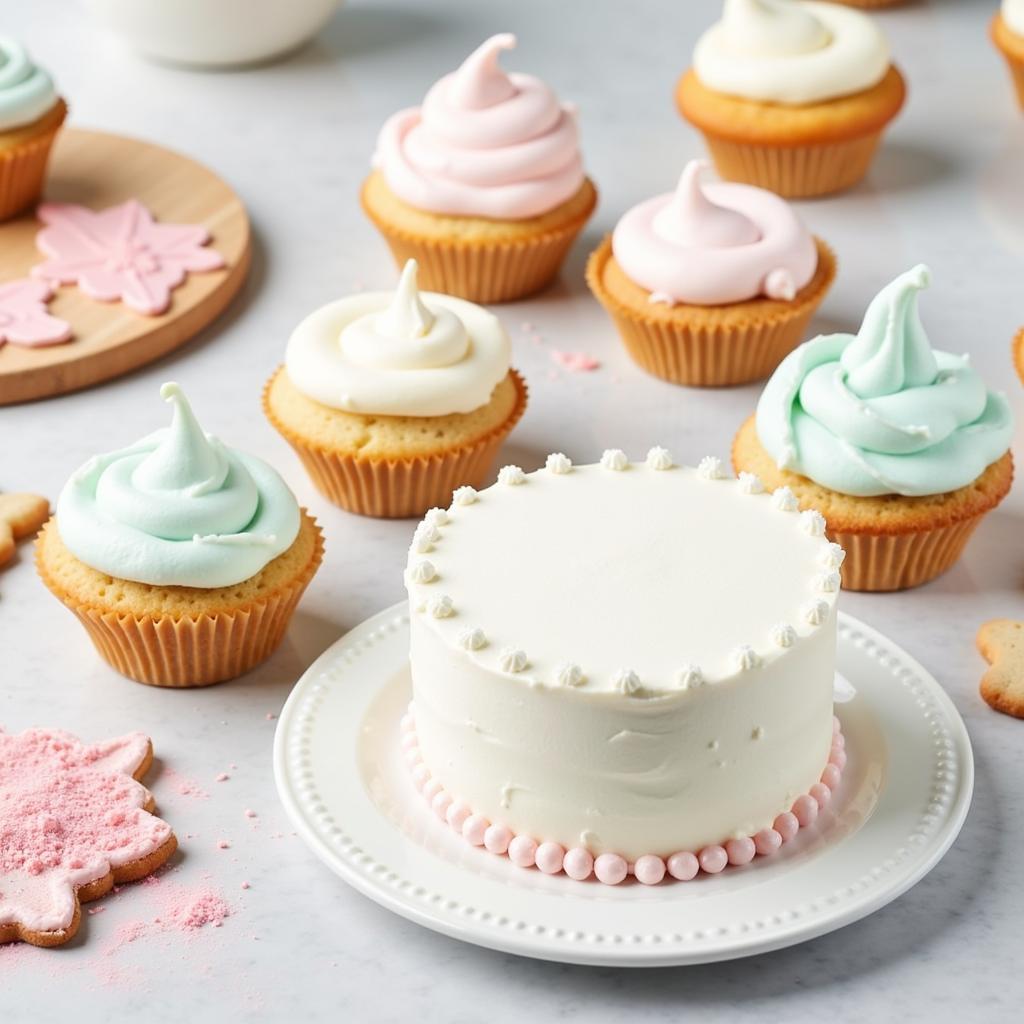White Food Gel Color is a versatile tool for bakers and decorators alike, allowing you to achieve pristine white shades or soften other colors in your creations. Whether you’re aiming for a snowy white frosting, delicate pastel hues, or simply correcting off-white tones, understanding how to use white food gel color effectively can significantly elevate your culinary endeavors. This guide will delve into the intricacies of using white food gel, offering tips, tricks, and answers to frequently asked questions.
Understanding White Food Gel Color
White food gel color, unlike liquid food coloring, offers a concentrated pigment that won’t alter the consistency of your icing, batter, or other mixtures. This makes it ideal for delicate recipes where maintaining texture is crucial. It’s also incredibly potent, meaning a little goes a long way, making it a cost-effective choice. You can easily transform vibrant colors into softer pastels by adding a touch of white food gel color. Need a deep purple? purple food coloring gel is a good option.
When working with lighter-colored batters and frostings, even a slight off-white tint can be noticeable. White food gel color allows you to correct these imperfections and achieve a true, pure white. This is especially important for wedding cakes, elegant desserts, and other occasions where a flawless appearance is essential.
Imagine creating a pristine white buttercream rose for a wedding cake, the petals seemingly sculpted from fresh snow. That’s the power of white food gel color. It allows you to transform ordinary ingredients into extraordinary culinary masterpieces.
Achieving the Perfect White with White Food Gel Color
Achieving a pure white with your batter or icing depends on the base color you’re starting with. If your base is already fairly white, a small amount of white food gel color might suffice. However, if you’re working with a slightly yellow or ivory base, you may need to add more. Always start with a small amount and gradually increase until you reach the desired shade.
Remember, less is more. Adding too much white food gel color can lead to an overly opaque finish, especially in translucent mediums like isomalt. It’s always better to add gradually and test the color along the way.
For specific color adjustments, consider consulting a color chart or experimenting with different ratios of white food gel color to your base mixture. This can help you create custom shades and achieve consistent results. Looking for a vibrant green? Consider using food dye green.
Techniques and Tips for Using White Food Gel Color
- Start small: Begin with a toothpick’s worth of gel and gradually add more until you reach your desired shade.
- Mix thoroughly: Ensure the gel is completely incorporated to avoid streaks or uneven coloring.
- Adjust for base color: The amount of gel needed will depend on the original color of your mixture.
- Test before committing: Always test the color on a small portion before applying it to the entire batch.
Why Choose White Food Gel Color Over Other Whitening Agents?
Some recipes suggest using ingredients like titanium dioxide to achieve a white color. However, white food gel color offers several advantages. It’s easier to control the color intensity, and you avoid the potential chalkiness that titanium dioxide can sometimes create. Plus, you won’t need a vibrant black in the same project, right? black food gel is always an option if you do!
Expert Insights
Chef Anya Sharma, a renowned pastry chef, shares her perspective: “White food gel color is a game-changer. It allows me to create pristine white canvases for my intricate designs. The control and precision it offers are unmatched.”
Similarly, cake artist David Miller adds, “I rely on white food gel color for delicate color adjustments and achieving flawless white finishes. It’s a staple in my toolkit.”
Conclusion
White food gel color is an invaluable tool for achieving the perfect white or softening vibrant hues. Its concentrated pigment and ease of use make it a superior choice for both novice bakers and experienced professionals. By following these tips and techniques, you can confidently use white food gel color to elevate your culinary creations and impress with stunningly white or delicately pastel masterpieces. Need a good meal afterward? Check out italian food durango colorado. For more specific advice on white food coloring gels, visit our dedicated page white food coloring gel.
FAQ
- Can I use white food gel color in chocolate? Yes, but be mindful of the fat content. It might require more gel to achieve the desired effect.
- Does white food gel color affect the taste of my frosting? Most high-quality gels have a neutral flavor.
- How do I store white food gel color? Store it in a cool, dark place, tightly sealed, to prevent drying out.
- Can I mix white food gel color with other colors? Absolutely! It’s a great way to create pastel shades.
- Where can I buy white food gel color? Most specialty baking stores and online retailers carry it.
- Is white food gel color vegan? Many brands offer vegan options. Check the label to be sure.
- What is the difference between gel and liquid white food coloring? Gel is more concentrated and won’t thin out your mixture.
 An assortment of pastries decorated with frosting colored using white food gel.
An assortment of pastries decorated with frosting colored using white food gel.
Need more information? Explore our website for articles on specific coloring techniques and other helpful baking tips. Also check out our pages on black food gel.
For any assistance, please contact us at Phone Number: 02437655121, Email: minacones@gmail.com or visit our address: 3PGH+8R9, ĐT70A, thôn Trung, Bắc Từ Liêm, Hà Nội, Việt Nam. We have a 24/7 customer support team.